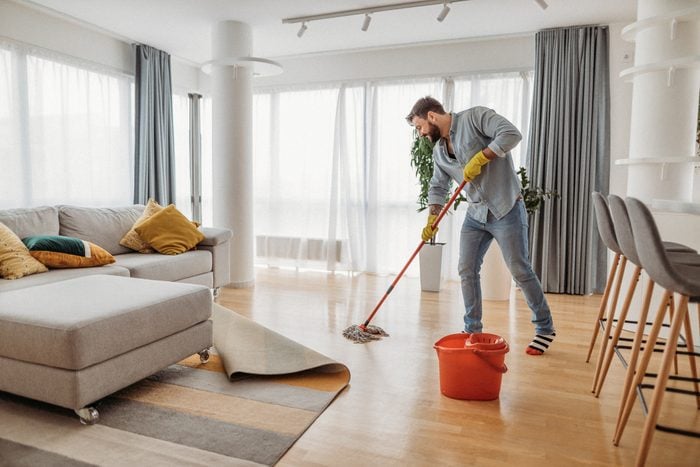Maintaining a clean environment is crucial for both homes and schools, as it directly impacts health, well-being, and overall productivity. Whether you’re managing a household or overseeing a school, elevating your cleanliness standards can lead to a healthier, more inviting space for everyone. In this article, we’ll explore expert tips for achieving exceptional cleanliness in residential and school settings, helping you create environments that are not only clean but also conducive to a positive living and learning experience, notes Pillar Property Management.
The Importance of a Clean Home Environment
A clean home is more than just visually appealing; it plays a significant role in the health and happiness of its inhabitants. Regular cleaning, as Signature Cleaning Services emphasizes, helps reduce allergens, prevent the spread of germs, and create a more comfortable living space.
Why Regular Cleaning is Essential
Keeping your home clean on a regular basis is essential for maintaining a healthy environment. Dust, pet dander, and other allergens can accumulate quickly, leading to respiratory issues and allergies. Moreover, kitchens and bathrooms can become breeding grounds for bacteria if not cleaned regularly.
- Reducing Allergens: Dust mites, pollen, and pet dander are common allergens that can trigger asthma and allergies. Regular dusting, vacuuming, and washing of linens can help minimize these allergens in your home.
- Preventing Germs: High-touch surfaces like doorknobs, countertops, and light switches can harbor germs and bacteria. Disinfecting these areas frequently reduces the risk of illness.
- Creating a Relaxing Space: A clean and organized home contributes to a sense of calm and relaxation, making it a more enjoyable place to live.
Fun Fact: The Origins of Spring Cleaning
Did you know that the tradition of spring cleaning dates back to ancient times? In Persia, people would “shaking the house” to prepare for the Persian New Year, while in Jewish culture, homes were cleaned thoroughly in preparation for Passover.
Best Practices for Residential Cleaning
Achieving a spotless home doesn’t require endless hours of work. With the right strategies and routines, you can maintain a clean and healthy environment with minimal effort.
Effective Cleaning Strategies
- Create a Cleaning Schedule: Break down your cleaning tasks into daily, weekly, and monthly routines. This makes it easier to manage and ensures that no area is overlooked.
- Use the Right Tools and Products: Invest in high-quality cleaning tools and non-toxic cleaning products. Microfiber cloths, for example, are excellent for trapping dust, while natural cleaners are safe for both your family and the environment.
- Declutter Regularly: Clutter can make cleaning more difficult and create hiding spots for dust and allergens. Regularly declutter your home to make cleaning more efficient and your space more organized.
Ensuring a Safe and Hygienic School Setting
Schools are high-traffic areas where maintaining cleanliness is critical to the health and safety of students, teachers, and staff. A clean, well-maintained school environment not only reduces the spread of illness but also creates a more positive learning atmosphere.
The Impact of Cleanliness on Learning
A clean school environment is linked to better student performance and fewer sick days. When classrooms, restrooms, and common areas are kept clean, students can focus better and are less likely to fall ill.
- Reducing Absenteeism: Germs spread quickly in schools, leading to illnesses that can cause students and teachers to miss school. Regular cleaning and disinfection help reduce the spread of these germs.
- Promoting Focus and Learning: A clutter-free and clean classroom can help students concentrate better, leading to improved academic performance.
- Boosting Morale: A clean and well-maintained school environment contributes to a positive school culture, making students and staff feel valued and respected.
Fun Fact: The History of School Cleaning
In the early 20th century, schools in the United States started implementing janitorial services to keep buildings clean and safe. This shift marked the beginning of more formalized cleaning practices in educational institutions.
Tips for Effective School Cleaning
Keeping a school clean requires a comprehensive approach that involves both daily maintenance and periodic deep cleaning. Here’s how to ensure a consistently clean environment in schools:
Daily and Deep Cleaning Routines
- Daily Cleaning: Focus on high-traffic areas such as classrooms, restrooms, and cafeterias. Wipe down desks, clean floors, and disinfect surfaces that are frequently touched.
- Deep Cleaning: Schedule deep cleaning sessions during school breaks. This includes shampooing carpets, waxing floors, and thoroughly cleaning restrooms and kitchens.
- Involve the Community: Encourage students and staff to take part in keeping their environment clean. Simple practices like wiping down desks or picking up trash can make a big difference.
Elevating cleanliness standards in both homes and schools is essential for creating safe, healthy, and inviting environments. By following these expert tips, you can maintain a pristine home that promotes well-being and a school that fosters a positive learning experience. Whether you’re tackling daily cleaning tasks or planning a deep clean, consistency and attention to detail are key to achieving and maintaining a high level of cleanliness. With the right approach, you can ensure that your living and learning spaces remain clean, healthy, and enjoyable for everyone.

















